Medicine of the future is biological. In order to turn the concept of biological implants and personalized therapies into tangible reality, scientists at Fraunhofer IGB are optimizing biological materials for processing with 3D printing techniques. Like classical tissue engineering, the so-called bioprinting pursues the goal of producing biological or biologically functional tissue in the laboratory. The printed in vitro tissues will serve as test systems to answer questions about the efficacy of active substance candidates and thus help replace animal testing. In the future, as biological implants, they may also act to stimulate damaged tissue to regenerate, or substitute them.
more infoSpotlight on: Our Focus Themes
-
-
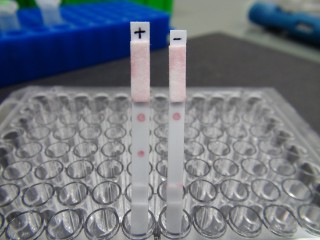
Lateral Flow – DNA probes as biosensors on test strips.
At Fraunhofer IGB we develop molecular biological diagnostic methods for the most unambiguous and specific detection of infectious pathogens – on the basis of nucleic acids (detection methods based on DNA high-throughput sequencing, lateral flow assay, diagnostic microarrays) or using cellular or immobilized reporter systems (ImmuStick).
more info -
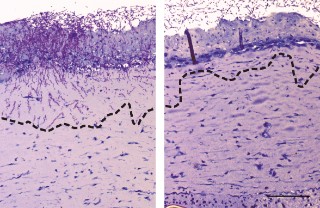
Infection of skin models with C. albicans in the presence (right) and absence (left) of immune cells.
Bacteriophages are a widely used alternative to antibiotics in Eastern Europe. At the IGB we develop platforms to engineer and produce them. The body's immune system plays a central role in fighting infections. Research at Fraunhofer IGB therefore also focuses on immunomodulating agents and the cellular mechanisms that are set in motion during an infection.
more info -
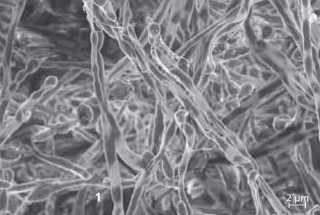
Figure 1. Scanning electron microscopic image of a Candida albicans biofilm.
Hygiene precautions and, especially in the case of many viruses, vaccinations are essential measures to prevent infectious diseases. In addition, bacterial films on surgical equipment, but also in food production, must be prevented or regularly removed.
more info -
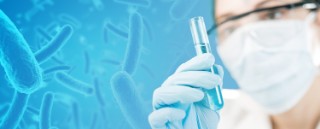
Researcher with pathogens.
The World Health Organization (WHO) has declared the Covid-19 pandemic, triggered by the novel coronavirus SARS-CoV-2, as an "emergency for public health on an international scale". Apart from the corona crisis, infections pose a permanent threat for humankind. According to the WHO, diseases caused by bacteria, viruses and parasites are still among the most frequent causes of death in non-industrialized countries. HIV/AIDS, tuberculosis and malaria, for example, kill almost five million people worldwide every year.
more info -

180-liter reactor module installed at Fraunhofer CBP’s outdoor facility in Leuna.
Microalgae produce a variety of interesting ingredients and are therefore an ideal source for food, feed, cosmetics and fine chemicals. Although the basic mechanism of microalgae growth has been well studied, there are only a few mathematical models that can be used to model microalgae growth. Such models are particularly important for the large‑scale cultivation of microalgae and serve as a basis for a robust, predictive control system. An essential component of this system are algorithms that enable automated optimization of microalgae growth. So‑called machine learning has been widely used for prediction and optimization in different areas. To predict the growth behavior of the microalgae Phaeodactylum tricornutum in outdoor cultivation, so-called Support Vector Machines (SVM) were used.
more info -
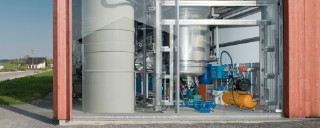
Anaerobic water purification in a bioreactor.
More and more people are living on this planet, who need to be supplied with water, food, energy and consumer goods. Today, 780 million people have no access to clean water and more than one billion people worldwide suffer from hunger. Excessive consumption of resources and climate change mean that raw materials are running low, more and more soils are eroding and groundwater reserves are becoming scarcer. This will further intensify the competition for resources.
more info -

Research facility with water.
What is being implemented only slowly or only through the pressure of statutory regulations at local authority level has long since found its way into many production sites of process-oriented industries. Rising raw material prices and costs in wastewater disposal make the treatment and reuse of process water and process wastewater and the recovery of auxiliary and process materials an economically attractive challenge for companies.
more info
 Fraunhofer Institute for Interfacial Engineering and Biotechnology IGB
Fraunhofer Institute for Interfacial Engineering and Biotechnology IGB